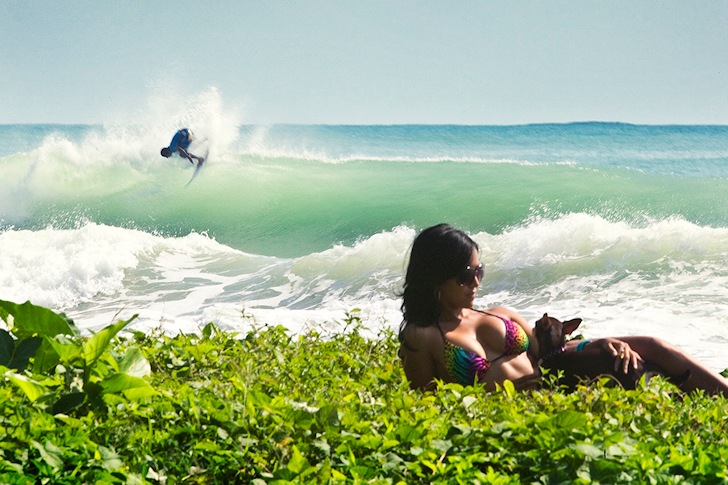The Republic of Panama, worldly known by the Panama Canal and its rich tropical landscape, is located in Central America, in the thin isthmus that connects North and South America.
With 5,637 kilometers of coastline, the country sits between Columbia and Costa Rica, bordered by the Caribbean Sea in the north and the Pacific Ocean in the south.
The climate is tropical, humid, and with high, uniform temperatures all year round.
In Panama City, the temperature ranges between 24 °C (75.2 °F) and 35 °C (95 °F).
The rainy season is long. It usually goes from May to November, but the duration may vary between seven to nine months.
Although Panama remains outside of the hurricane belt, thunderstorms are common during that time.
There are also some differences between the Pacific and Caribbean sides of the country regarding the weather.
On the Pacific side, the temperatures tend to be slightly lower, and the rain is much less abundant than on the Caribbean side.
Surfing in Panama can be an extraordinary experience because you'll find many surf spots uncrowded.
On the Pacific coast, the south and west swells will pump incredible waves. Expect large tidal ranges in the country, so beware of shallow waters.
The area around Santa Catalina, in the Southwest of the country, offers a wide variety of surf spots.
La Punta and Punta Brava are perfect picks, with their endless rides.
Nearly 50 kilometers up in the north, near Remedios, you'll find surf camps and spots like P-Land, Nestles, and Morro Negrito.
The Caribbean side enjoys perfect ENE wind swells, and Bocas del Toro is the place to be when the waves start breaking.
Bluff, Dumpers, Paunch, Careñeros, and Silverbacks are remarkable wave peaks for you to try.
Finally, if you're in the eastern coast, near Panama City, head for Mojon Beach, Nuevo Loco, La Zurda, Panama La Vieja, and Las Bóvedas.
Twenty kilometers south, near Coronado, go for Playa Malibu, Playa Serena, Rocky Point, Punta Teta, Rinconsito, Esmeralda, Punta Palmar, Hawaiisito, or Rio Mar.
